Russia vs. America: Nuclear Threats
Dear Readers,
I have increasingly drawn your attention to Russia over the past months.
Just as China’s overall growth has played a significant role in our market, Russia’s ambitions will have a dramatic effect on global economies.
Specifically, Russia will continue to grow as an energy powerhouse. This is important because the nation – under Vladimir Putin’s reign – will challenge anyone standing in its way for global energy dominance.
Including the all-powerful United States.
That is why we should be focusing on Russia’s actions as it relates to our investment decisions and forecasts.
Russia vs. United States
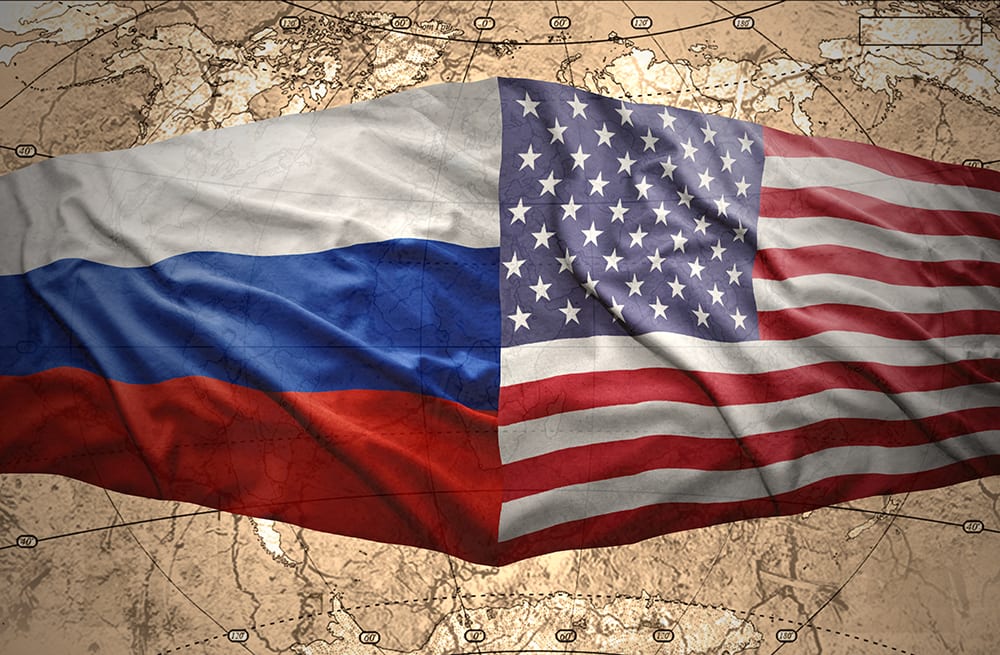 From a military standpoint, Russia is lacking when compared to the United States. However, the distance between the two is not as far off as every one believes.
From a military standpoint, Russia is lacking when compared to the United States. However, the distance between the two is not as far off as every one believes.
Sure, the United States has more than double the amount of trained soldiers, more than triple the amount of tanks, three times the amount of air crafts and helicopters, superior and more technically advanced naval capabilities, and more than 10 times the defense budget.
But Russia has nukes – lots of them.
According to the Federation of American Scientists, Russia currently has a total of 8500 nukes – the most nuclear warheads in the world.
Of the 8500, 1800 of them are active – that’s only second to the United States’ 1900 active nukes.
And Russia has boldly told the world that it’s not afraid to use them.
Not Afraid to Nuke
A few years back, Russia amended its military doctrine to allow for the possibility of using nuclear weapons first in retaliation to a non-nuclear attack.
This Wednesday, a senior government minister warned that Russia could retaliate with a nuclear strike if a new US military strategy threatened its security – more specifically, the United States’ Prompt Global Strike system.
According to the Moscow Times:
“Putin said Russia was closely following the development of so-called “disarming instantaneous global strike” programs, which he said could harm the international balance of power. Without naming the U.S. specifically, he seemed to be referring in part to the U.S.’ planned Prompt Global Strike system (PGS), which is designed to be capable of hitting a target anywhere in the world with a precision conventional weapon that could disarm a country’s nuclear capability.
“The ramping up of high-precision strategic non-nuclear systems by foreign countries, in combination with the buildup of missile defense capabilities, could negate all previously reached agreements in the area of limiting and reducing strategic nuclear weapons, and could lead to the destruction of the so-called strategic balance of powers,” Putin said.
On Wednesday, Deputy Prime Minister Dmitry Rogozin said Russia reserved the right to use nuclear weapons in response to a conventional strike and sees them as a “great equalizer” reducing the likelihood of aggression. And in an interview published in Kommersant on Thursday, Deputy Foreign Minister Sergei Ryabkov said the U.S. Prompt Global Strike system could have “apocalyptic consequences.”
In other words, Russia may launch a nuclear warhead – even if its not being attacked.
There’s no doubt there should be a system in place to disable the use of ANY nuclear warheads. Moreover, all active nuclear warheads should be disabled.
However, that is simply not how the world’s political system works.
Nuclear weapons remain the major component in Russia’s arsenal that maintains what Putin calls the “strategic balance of powers.”
What do you think of Russia’s “right” to use nukes? What do you think of Russia’s threats? Do the threats have substance?
CLICK HERE to leave a comment.
Putin: Don’t Bully Us
 Putin has boldly and publicly stated that it won’t be bullied when it comes to military power:
Putin has boldly and publicly stated that it won’t be bullied when it comes to military power:
“Let no one have illusions that he can achieve military superiority over Russia. We will never allow it…Russia will respond to all the challenges, both political and technological. We have all the necessary potential.”
– Vladimir Putin to the Russian Federal Assembly
Deputy-PM Dmitry Rogozin, who oversees the Russian military and defense industry, also warned that Russia has the means to defend itself from advanced and future weapons:
“Any aggressor has to realize that whatever he does in terms anti-ballistic missile defense or the attempts to reach hypersonic speeds to deliver precision weapons, to neutralize Russia’ nuclear potential, it would be nothing more than an illusion, and will stay that way. We are not going to sit idle.”
Rogozin is right, Russia has not been sitting idle.
While President Barrack Obama is busy finding ways to cut America’s defense budget, Russia has already allocated nearly $700 billion on its military modernization program and is openly announcing its growing military efforts.
Russian Military Expansion
Putin is now leading the nation’s greatest military growth since the cold war by increasing its military technology and capacity, and advancements of robotic weaponry. Some of these advancements include the development of a new missile defense radar in southern and western Russia designed to counter missiles launched from Europe.
He has already announced the addition of 40 new Yars (SS-29) Intercontinental Ballistic Missiles (ICBMs) to Russia’s nuclear arsenal next year, which are capable of penetrating U.S. missile defenses.
They look like this:
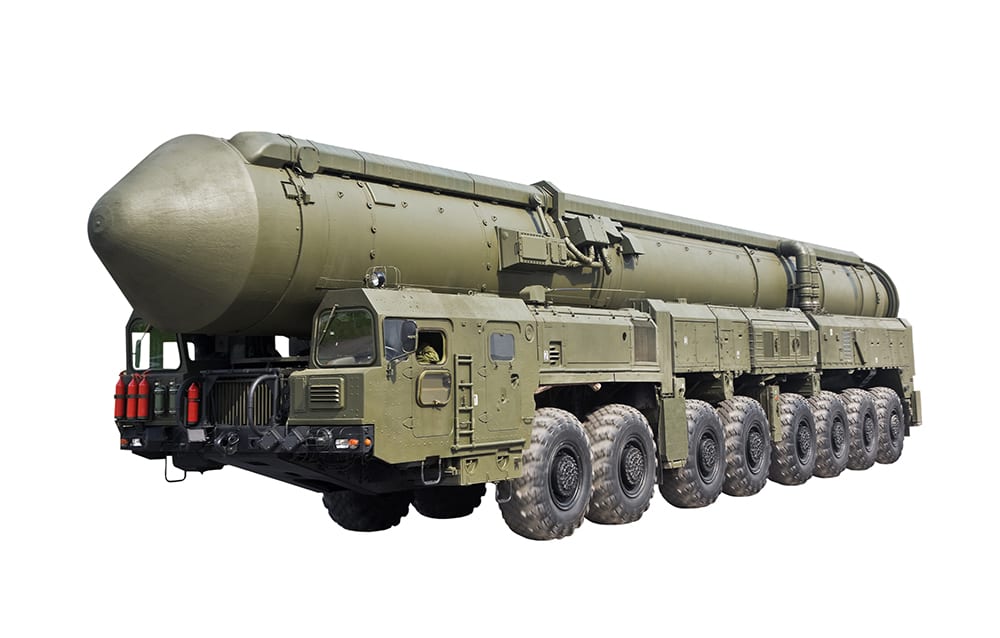
Earlier this year, Russia Today reported that Moscow is establishing a permanent and powerful naval presence in the Eastern Mediterranean for the first time since the days of the Soviet Union.
In January, Russia held its largest naval exercises in the region with drills spanning both the Black and Mediterranean Seas.
Earlier this summer, Russia staged its biggest military exercise since the cold war in order to ascertain the readiness of putting intercontinental ballistic missiles on “high-alert” within a short time frame. It involved some 160,000 servicemen, about 1,000 tanks and armored vehicles, 130 aircraft and 70 warships from the Far Easter and Central military districts.
In the air, the Russian military said its on pace to keep up with its U.S. military counterparts in the field of hypersonic aircraft – that is, an aircraft capable of going Mach 5.1, or five times faster than the speed of sound.
According to UPI:
Russian Deputy Prime Minister Dmitry Rogozin, who’s in charge of the defense industry, said the Kremlin was working to keep up with the United States in terms of military technology, Russia’s state-run news agency RIA Novosti reports.
“Both we and the Americans conduct researches about hypersonic technologies, or speed that is more than six times above the speed of sound. This is not a secret, but everything else is,” he was quoted as telling Rossiya TV. “I can tell you that we are running neck and neck with the Americans as far as these technologies are concerned.”
Russia will also soon develop a prototype of an advanced lightweight fighter jet to supplement fifth-generation T-50 aircraft.
While Russia expands its military efforts at home, its also busy expanding its military presence in other countries in order to capture energy producing allies – just as the United States has done in the Middle East and the Persian Gulf.
Growing Arms Race
In 2012, the United States was the number one global exporter of weaponry, with sales of USD$69.1 billion – mostly to its client states in the Persian Gulf and the Middle East.
Russia, meanwhile, ranked a distant second with reported sales of only USD$15.2 billion. However, Russia is determined to topple the United States as the leading global arms exporter by quadrupling its annual weapons sales to over 50 billion dollars by 2020.
In the world of weaponry, there is no such thing as a free lunch. Nations who provide weapons to other countries always want something in return – and it almost always involves natural resources.
Control Energy, Control Power
Russia wants to control energy, but it must have a strong military presence to do that – not just at home, but strategic energy hot spots around the world.
I mentioned this in one of my last Letters, “How Russia Uses Energy to Gain Global Power.”
In that Letter, I also mentioned that the next major target for global military powers – United States, China, UK, and Russia – is Africa.
That’s why Russia’s quadrupling of arms sales involves adding weapons to Afghanistan and Oman, and African countries such as Ghana and Tanzania.
As Russia quietly invades Africa with its military presence and arms delivery, it will gain influence over more energy assets – in particular, uranium assets.
Just How Much Influence?
Over the past five years, Russia has quietly secured numerous uranium/nuclear deals in Africa:
- Between 2007 and 2008, Somalia invited Russian firms to develop their uranium deposits and proposed export terms.
- In 2008, Rosatom entered into a joint venture with SWA Uranium Mines in Namibia.
- In March 2009 Russia signed a cooperation agreement with Nigeria, including provision for uranium exploration and mining in the country. A further broad agreement in June 2009 envisaged the construction of a Russian power reactor and a new research reactor.
- In 2009, Russia signed a cooperation agreement with Egypt in the exploration and mining of uranium. Earlier this year, Egypt invited Russia to join a project to build a nuclear power plant in the country and to develop more Egyptian uranium deposits, just as the nation announced that it discovered huge amounts of uranium ore.
- In 2011, Russia announced that it is cooperating with the Ethiopian Geological Survey in the study of fields and the assessment of potential uranium reserves in Ethiopia.
- In 2012, Russia’s ARMZ acquired Mantra Resources, and this year received Tanzania’s first uranium mining license.
Russia has been growing its energy assets all over the world. The nation is a world leader in nuclear technology and is fast becoming one of the biggest controllers of uranium assets globally.
Anyone with common sense knows Russia won’t be selling uranium to anyone for cheap – especially not America. That alone should be more than enough to expect higher uranium prices.
And a growing military presence for Russia is something you can bet on.
The Growing Need for Energy Fuels
While many have an ingrained belief that nuclear power is a thing of the past, that statement is far from reality.
All over the world, plans are being made to increase nuclear capacity.
More than 20% of American energy comes in the form of nuclear power.
More than 50% of the uranium used to generate that energy is imported from Russia, or countries under the influence of Russia.
Russia will continue to acquire and control uranium assets because it believes nuclear energy will continue to be a dominant energy source in the future; China believes the same and both countries have joint global efforts for the pursuit of uranium assets and nuclear energy.
Countries all over the world are increasing their nuclear energy strategies.
Despite the on-going debate of nuclear power, the reality is that it’s not going away, its only growing.
The American government knows this. Just as it is doing with oil, it will encourage further production of uranium assets on its home turf.
A few weeks ago, I talked about a uranium company that I believe will do very well if uranium prices rise next year, as I expect it to.
Uranerz Energy Corp
(TSX: URZ)(NYSE MKT: URZ)
Last week, Uranerz announced that it has secured a $20 million loan from the Wyoming State government to move its uranium mine in Wyoming’s Powder River Basin into production.
That means much of the financial risk has been removed and the Company should now be on its way to production within a few months – just as uranium prices are expected to climb.
The $20 million gives the Company ample room to not only pay off its current loan of $6 million, but more than enough cash to initiate production at their Nichols Ranch ISR Uranium Project.
Not only that, Uranzerz also announced a very strong addition to their team: Mr. Paul Goranson
Paul will become the President, Chief Operating Officer and a Director for Uranerz Energy.
Paul was the President of Cameco Resources, a wholly-owned U.S. subsidiary of Cameco Corporation, which is one of the world’s largest uranium mining companies.
This man has over twenty-five years of mining, processing and regulatory experience in the uranium extraction industry.
Not only did he expand production at Cameco, he led the construction, start-up and operation of the Alta Mesa project that achieved over one million pounds of uranium production per year under his leadership.
The addition of Paul to the team, in conjunction with the closing of their $20 million state loan from Wyoming, puts Uranerz in a very strong position. Unlike many uranium companies mired in debt and low margins, Uranerz should come out of the production gates very strong with little debt and higher margins.
They’ve got the money, they’ve got the team, they’ve got a mining license – they’ve got everything that they need to finally move toward production.
I expect 2014 to be a stellar year for Uranerz Energy Corporation.
Food for Thought
Nukes and the Virus
There’s been a big wave of newsletters and media outlets talking about a virus that could potentially threaten every single nuclear reactor in the world. Just so you are made aware, this virus is called Stuxnet.
Stuxnet is a malware worm that the US and Israel designed to cripple Iran’s nuclear program. However, in a 2012 report from The New York Times and recent leaks by Edward Snowden confirm that the US was not only behind the virus, but has lost control of it.
The malware is now evidently attacking nuke plants as far away as Russia.
For now, it’s not as dire as some are making it out to be. However, Stuxnet is an extremely complicated virus and repercussions on home turf have yet to surface.
What should be noted is that Stuxnet could lead to other more advanced viruses that could easily be infiltrated in America. These viruses could be carried on a USB, or on a cell phone, and could attack nuclear reactors in ways never thought possible.
Try having a customs officer intercept code on a cell phone…
Bitcoin Update
It seems everyone is looking for an alternative to currency and is riding the wave of digital currency.
JP Morgan is now said to have interest in the space by filing a “digitial currency” patent.
Here’s the article: JPMorgan Chase Building Bitcoin-Killer
The Equedia Letter
We’re biased towards Uranerz Energy Corporation because they are an advertiser and we own options. We currently own shares at the time of this writing. You can do the math. Our reputation is built upon the companies we feature. That is why we invest in every company we feature in our Equedia Reports, including Uranerz Energy Corporation. It’s your money to invest and we don’t share in your profits or your losses, so please take responsibility for doing your own due diligence. Remember, past performance is not indicative of future performance. Just because many of the companies in our previous Equedia Reports have done well, doesn’t mean they all will. Furthermore, Uranerz Energy Corporation and its management have no control over our editorial content and any opinions expressed are those of our own. We’re not obligated to write a report on any of our advertisers and we’re not obligated to talk about them just because they advertise with us.


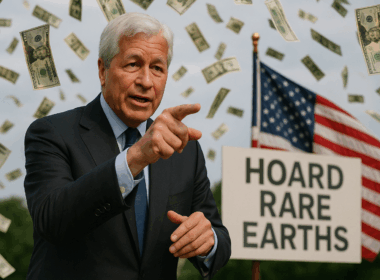
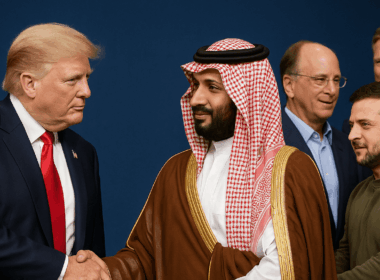




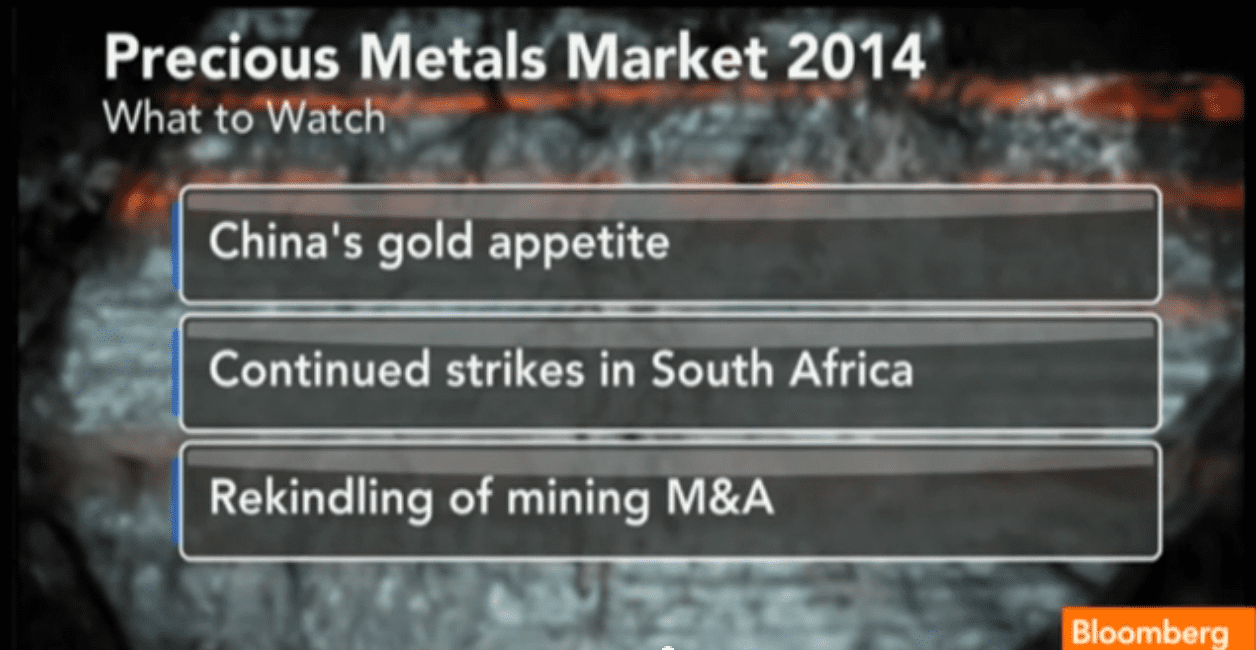

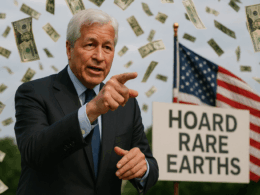



Russia is clearly just making empty threats knowing that America won’t be the one to launch the first attack and make itself the aggressor. Putin has been smart in playing his cards. Obama is an idiot
It would be interesting to see what happens because America hasn’t deviated from its plans for their PGS system. Does that mean Russia is going to start firing nukes? Doubtful. The question is what is the next move?
If I were a Russian faced with America’s superior military might, I too would use the threat of nuclear first strike to keep America in check.
Russia has always been aggressive in its statements, but now the country is really making a comeback, one that shows no signs of slowing down. Putin is not exactly a class act and is very dangerous and ruthless. Be careful
Putin has no love for the West and for America in particular. But he is no fool: he knows that the US has a great military superiority that Russia will never be able to match, let alone surpass. No matter what he comes up with in terms of new weapons, the US will always be at least one step ahead of him. It all boils down to GDP: the huge difference in GDP between the two countries will always keep armaments in the same ratio, no matter how many resources Russia throws into armaments.
The US has a GDP almost seven times larger than Russia’s whose GDP is almost entirely resource-driven. Any significant drop in oil, gas or minerals prices will push Russia’s GDP way down the ladder.
Notwithstanding his well-publicized dislike of America, Putin never mentions his two major enemies and his fear of them: the Chinese in the East and the Muslims within Russia and the Muslim states “associated” with it. These Muslim populations want more independence and less controls from Moscow, not more. At the other end the Chinese see the rich and empty spaces of Siberia like a promised land and want it.
Time is on their side and they can wait.
Russia’s threat to use advanced weapons as a first strike can be construed more as a warning toward its real enemies rather than the West.
Putin is dreaming to create a new Soviet Union, another giant with clay feet that will crumble under the weight of corruption and lack of democracy.
The real danger lies in whose hands those dreadful weapons will end up in post-Putin days.
Who was first to develop the nuclear bombs? Who has been the only one to drop nuclear bombs? Who has caused the nuclear power race?
Who has to be feared and to take defensive action against?
Who should give convincing evidence of nuclear disarmament?
Who should replace the Uranium fuelled energy generation by the almost “green” Thorium fuelled ones?
Let’s stop hegemonic arguments, and promote world wide direct democracy!
Putin is a bully but, hopefully,not stupid in that the nuke card threat is fine but the reality is he will be glowing in the dark and vaporized quite soon after his index finger pushes the red button.I am not as worried about a blow-hard like him as opposed to that nitwit in North Korea or some crazy in the Middle East. Welcome back to the sixties I guess. We sure could use a Kennedy again.
Ok, last week an article about a company fabricating e-cigs, that pretty much anyone can compete with, to a re-start of an arms race with Russia this week, as an excuse to invest in an uranium miner. The author has ties with both companies featured and encourages us to invest. It’s my 2nd issue and I think it’s time to Unsubscribe from this so-called investment newsletter. Equedia has been worth what I paid for it: zero.
I don’t see an issue with a newsletter writer talking about his investments. frankly, I find it appalling that there are newsletter writers out there that about how great a company is, but doesn’t invest in it. my 2 cents.
You write: “Paul will become the President, Chief Operating Officer and a Director for Uranerz Energy moving forward.”
Because the phrase “moving forward” refers to time, where else is there to move? Backward? Sideways? Up? Down? No, none of those. Time ONLY moves forward, so why appear like a trendy copycat of a meaningless phrase that only makes you look silly?
You would have been quite proper and sufficient to have written: “Paul will become the President, Chief Operating Officer and a Director for Uranerz Energy.”
Gilding the lily doesn’t make it better, It kills it.
Why do so many critics come on here and comment about stupid stuff? Every one is a writer, yet no one on here writes.
Some people have nothing better to do…
If it happens then he will only have his own country nuked, I think? Why would he want to do this, its pathetic this world will not regain anything out of this at all, why do we want to go back in time and start again for what reasons Its madness.